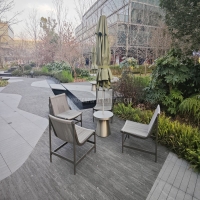Welcome to the website for landscape facilities products and knowledge.
How does the bin’s design prevent the waste from becoming a slipping hazard in wet conditions?
Waste bins are often overlooked as potential slipping hazards, especially in wet conditions. However, modern bin designs incorporate several innovative features to mitigate this risk.
1. Non-Slip Bases: Many bins now feature rubberized or textured bases to enhance grip on slippery surfaces, reducing the chance of movement or tipping.
2. Drainage Systems: Bins designed for outdoor or high-moisture areas often include small drainage holes at the bottom. These allow liquids to escape, preventing pooled water that could create slippery surfaces.
3. Weighted or Low-Centered Designs: Heavier bins or those with a low center of gravity are less likely to tip over, minimizing spillage and subsequent slipping risks.
4. Durable, Slip-Resistant Materials: High-quality plastics or coated metals are used to ensure the bin itself remains stable and less prone to becoming slick when wet.
5. Secure Lids: Tight-fitting or locking lids prevent waste and liquids from spilling out, further reducing slip hazards.
By integrating these features, modern waste bins effectively address safety concerns in wet environments, making them a reliable choice for both indoor and outdoor use.
Related search:

Recommendation
Metal structure rattan chair without armrests for single person, with woven seat and backrest.